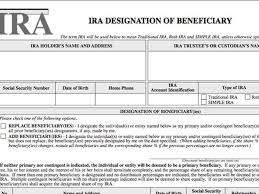
A frequently used strategy to save for retirement is an IRA. This money is saved to fund retirement, but there’s always the possibility that you’ll die before all the money is withdrawn. That means you must plan for what happens to that money after you are gone. Designating a trust as your IRA beneficiary is one option. It provides you with maximum control over the distribution of your assets after you die.
KTVA.com’s recent article, “How to Name a Trust as Beneficiary of an IRA,” discusses some of the important elements of naming a trust as an IRA beneficiary. Naming a trust as a beneficiary requires careful planning, so work with an experienced estate planning attorney.
Naming a trust as the beneficiary of your IRA gives you much more control over the funds because trusts use written instructions for how and when the money should be paid out. Designating a trust as the beneficiary of an IRA also lets you enjoy the tax benefits of an IRA while still maintaining maximum control of funds.
This is also a good move for a person who wants to leave her IRA to a beneficiary who may need some additional direction, like a minor child, a spendthrift child or spouse, or a person with special needs. Naming a trust as your beneficiary also shields the funds from creditors—a great estate planning strategy if your state doesn’t protect inherited IRAs.
However, naming a trust as a beneficiary of your IRA probably isn’t the best choice if you want your retirement savings to go to your spouse. Spouses who inherit IRAs are able to roll the deceased’s IRA into their own IRA account, tax-free. If you want your spouse to inherit your IRA with no strings attached, designate your spouse as the primary beneficiary of your IRA.
There are several requirements that must be met when designating a trust as the beneficiary of your IRA. They include the following:
- It must be a valid trust under state law;
- The trust must be irrevocable (or become so upon your death);
- The trust’s beneficiaries must be individuals; and
- The trustee must provide a trust document or certified list of beneficiaries to the IRA’s custodian or trustee by October 31st of the year after your death.
However, there are some drawbacks to doing this: the expense of structuring and maintaining the trust and designating a trust as the beneficiary of your IRA are much more complicated than simply naming a beneficiary of your IRA.
You also forfeit the ability for your spouse to roll over the IRA into his own IRA tax-free. This cancels out some of the tax benefits, because if you didn’t designate a trust as the beneficiary—and the IRA funds just rolled over—the tax-advantaged account would grow more quickly. But it also prevents your spouse from naming his new spouse or lover as the beneficiary on what used to be your IRA.
Keep in mind that just because a trust is named as the beneficiary of an IRA doesn’t mean the assets are transferred to the trust—they shouldn’t be. Instead, they should remain in the IRA to take advantage of the account’s tax benefits until distribution of the assets begins.
To set up a trust as the beneficiary of your IRA, you’ll need the help of a qualified estate planning attorney. Mistakes can be costly.
Reference: KTVA.com (July 15, 2019) “How to Name a Trust as Beneficiary of an IRA”
Other articles you may find interesting:
How Much Money Should I Provide My Child with Special Needs?








